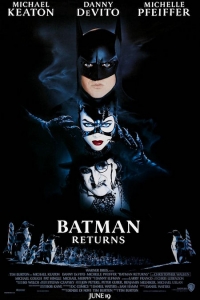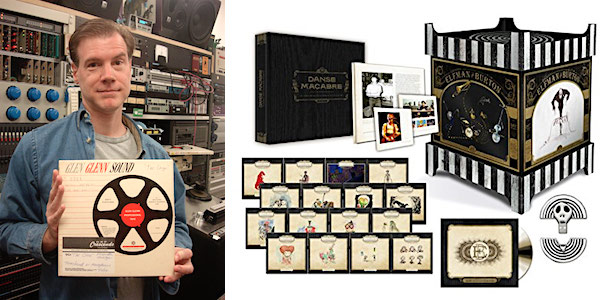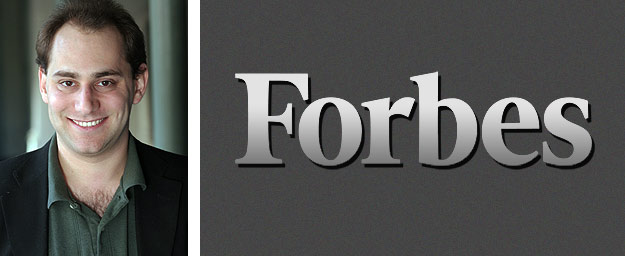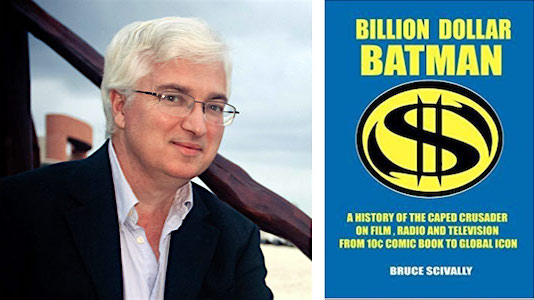THE Q&A
Jeff Bond is the author of Danse Macabre: 25 Years of Danny Elfman and Tim Burton (included in The Danny Elfman & Tim Burton 25th Anniversary Music Box, Warner Bros., 2011). He also wrote The Music of Star Trek (Lone Eagle, 1999) and (with Joe Fordham) Planet of the Apes: The Evolution of the Legendary Franchise (Titan, 2014) and The Art of Star Trek: The Kelvin Timeline (forthcoming from Titan). Jeff is the former editor of Geek magazine, covered film music for The Hollywood Reporter for ten years, and has contributed liner notes to numerous CD soundtrack releases. He also has portrayed Dr. McCoy on the Star Trek New Voyages: Phase II Internet series.
Scott Mendelson is a box office analyst and film critic for Forbes magazine. He has also written for Film Threat, The Huffington Post and Salon.
Bruce Scivally is the author of Billion Dollar Batman: A History of the Caped Crusader on Film, Radio and Television from 10¢ Comic Book to Global Icon (Henry Gray, 2011). His other books include Dracula FAQ: All That’s Left to Know About the Count from Transylvania (Backbeat, 2015), Superman on Film, Television, Radio & Broadway (McFarland, 2006) and (with John Cork) James Bond: The Legacy (Abrams, 2002). As well, he has written and produced numerous documentaries and featurettes that have appeared as supplemental material on LaserDisc, DVD and Blu-ray Disc, including several of the Charlie Chan, James Bond, and Pink Panther releases. He is Vice President of New Dimension Media in Chicago, Illinois.
The interviews were conducted separately and have been edited into a “roundtable” conversation format.
Michael Coate (The Digital Bits): In what way should Batman Returns be remembered on its 25th anniversary?
Jeff Bond: Both Burton’s Batman films are pivotal both to lay the foundations for the serious, psychologically complex superhero movies we see today, and as the illustration of Tim Burton as an utterly unique artist who was given the reigns to Warner Bros.’ and DC’s priceless comic book superheroes. He was allowed to take these iconic characters, who for years had been marketed as toys and coloring books and comic books generating millions and millions of dollars, and potentially risk destroying all of that as a revenue stream and cultural artifact by reinterpreting them through his totally idiosyncratic vision — and it worked.
Scott Mendelson: It remains something of a pop-culture anomaly. It was a financially successful summer release nonetheless remembered for its poor audience reception and lightning-fast box office downfall. The film was the first modern quick-kill blockbuster, in that it was so anticipated and opened so well (a record $47 million opening weekend) that it ended up making a ton of money even though most folks didn’t care much for it…. It some ways, it is the best live-action Batman movie, offering insanely original imagery and deeply weird characters amid a Grimm fairy tale reimagining of the Batman mythos that nonetheless is relatively faithful to the late-1980s/early-1990s comic book era. It is a fine example of going against the source material in the service of a better movie, or at least in the service of the specific character drama that a filmmaker is trying to tell.
Bruce Scivally: In 1989, after a decade of false starts, Batman opened to become one of the hottest movie tickets of the summer. Unlike 1978’s Superman, which established the template for big-budget “A” list superhero movies — and was practically the only “A” list superhero franchise for the next decade — Batman showed that there was room in the superhero universe for a darker conception of what a hero could be. But the first film was such a phenomenon that it raised a crucial question — was its success just a fluke, a combination of good timing, savvy marketing and superstar casting (Jack Nicholson, who played the Joker, was at the height of his fame)? Or was it a sustainable franchise, whose success could be repeated? Warner Bros. gambled on the latter, and backed the production of a sequel, under the guidance of the same director (Tim Burton), the same producers (including Michael Uslan, the originator of the project who fought tremendous odds to bring a Batman to the screen that wasn’t Day-Glo campy like the 1960s TV series), and the same star (Michael Keaton, whose career shift from manic comedy roles to brooding loner parts was helped greatly by Batman’s success). It was a calculated gamble that paid off; Batman Returns, like its predecessor, became a bona-fide box-office blockbuster.
Coate: What did you think of Batman Returns? Can you recall your reaction to the first time you saw it?
Bond: My reaction was complicated — I really loved Burton’s original Batman, and I do remember being truly impressed by just what an auteur’s vision Batman Returns was. But for my taste it almost went all the way over into self-indulgence, where the action movie roots got swamped by almost a celebration of victimhood and outsiders — basically everyone from Batman to Catwoman to the Penguin is a wounded, brooding social outcast, which is what Burton understood best, and that all got kind of lugubrious for me and sucked the fun out of it. A lot of the action in Batman was driven by the second unit director Peter MacDonald, and I think I missed his touch on the second one. But I appreciate it more today, especially for Walken’s and Michelle Pfeiffer’s performances.
Mendelson: I loved it when I was 12 and I still love it. It’s kind of an art house blockbuster, where if it wasn’t based on known characters it probably would have been hailed as an indie arthouse masterpiece of sorts. It’s deeply weird, often painful in its character melodrama and absolutely rooted more in character than plot or long-form storytelling. And, sad to say, but Michelle Pfeiffer’s Catwoman is every bit as “groundbreaking” a major female character in a mega-blockbuster as she was twenty-five years ago.
Scivally: I had felt that the first Batman film was a triumph of marketing over movie-making (for me, its plot rambles and often makes little sense). Batman Returns was more tightly scripted, but it began the formula of multiple villains in each film. If you count Max Shreck (named for the actor who starred in the 1922 horror film Nosferatu), there were three villains in Batman Returns, as opposed to one in the first film. The more villains you have, the less screen time you have to devote to each one and to their conflicts with Batman. More importantly, the more villains you have, the less time you have to devote to your hero. This contributed to Michael Keaton leaving the series; with Batman Returns, he felt that he was a guest star in his own film series (indeed, in the film’s first half hour, Keaton is on screen for only about five minutes). The reason for the glut of villains has more to do with the marketing team than with the creative team; Warner Bros. began to look at the Batman films as elaborate toy ads — the more villains there were in the film, the more different kinds of toys they could sell. At the same time, it firmly established the film series as a kind of counterpart to the TV series, in that both featured high-profile name actors as villains.
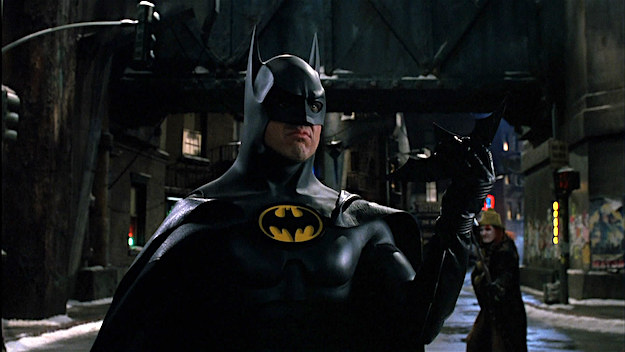
Coate: In what way is Batman Returns significant within the superhero/comicbook genre?
Bond: It’s the first auteur superhero movie. On Batman, I think Tim Burton was given an unusual freedom of expression, but he was still under the reigns of Warner Bros. and I think there were some important decisions that were not necessarily left to him. I think they brought Peter MacDonald in to make sure they were getting a slam-bang action movie. Then once they had an incredible hit with Batman and Burton made Edward Scissorhands, which was a totally personal film and still a huge hit, I think the execs at Warners realized that you just let Tim Burton alone and let him make a Tim Burton movie and people will see it in droves. So there is so much strangeness in Batman Returns — opening it with the journey of that little floating cradle holding the Penguin, and ending it with an attack on Gotham by an army of rocket-armed live penguins, and all sorts of other stuff — it’s an insane movie and probably one of the most insane blockbuster movies ever made.
Mendelson: The overall lesson of Batman Returns, in terms of its reception, was that these big movies, even the ones that were PG-13 and arguably aimed at older kids/adults, were going to be viewed by very young kids. After Batman Returns, we saw a slight neutering of genuinely adult content (sex and violence) in popcorn blockbuster movies of this nature. It led to the PG-13 slowly but surely being turned into a glorified PG, before Lord of the Rings sent everything in the other direction where any number of PG-13 movies are basically R-rated movies edited “just so” for that kid-friendly rating…. But even today, twenty-five years later, you’d never see anything as weird or kinky or outright sexual in a comic book superhero movie as you did with Batman Returns. Even something like Logan is basically a standard western with R-rated violence, and Deadpool is a bawdy action comedy that mostly plays nice with its audience and characters.
Scivally: Like its predecessor, Batman Returns is significant for its tone and the portrayal of its main character. National Periodical Publications/DC Comics had considered ceasing publication of the comic books due to low sales until the TV series premiered and made the character one of the “3 B’s” of the 1960s — the Beatles, Bond, and Batman. Although the TV series accurately captured the tone of the comic books of that era, many fans who came of age in the 1970s — when the comic books took a more serious, adult tone and approached the character more seriously — hated the campy depiction of their hero. Michael Uslan made it his mission to bring a vision of Batman to the big screen that would be more in keeping with the 1970s conception, and found it nearly impossible to overcome the deeply ingrained perception of Batman as a “silly” comic book. It helped that by the time Batman was released in 1989, comic books had become “graphic novels” with a readership of young adults rather than young kids, and writer Frank Miller had reinvented Batman with a critically-acclaimed 1986 graphic novel masterpiece, The Dark Knight Returns. After the disappointing box-office returns of two campy Superman movies and a Supergirl film, Batman and Batman Returns began the evolution of superhero movies into darker tales made, like the first two Superman films, primarily for adults, not children.

